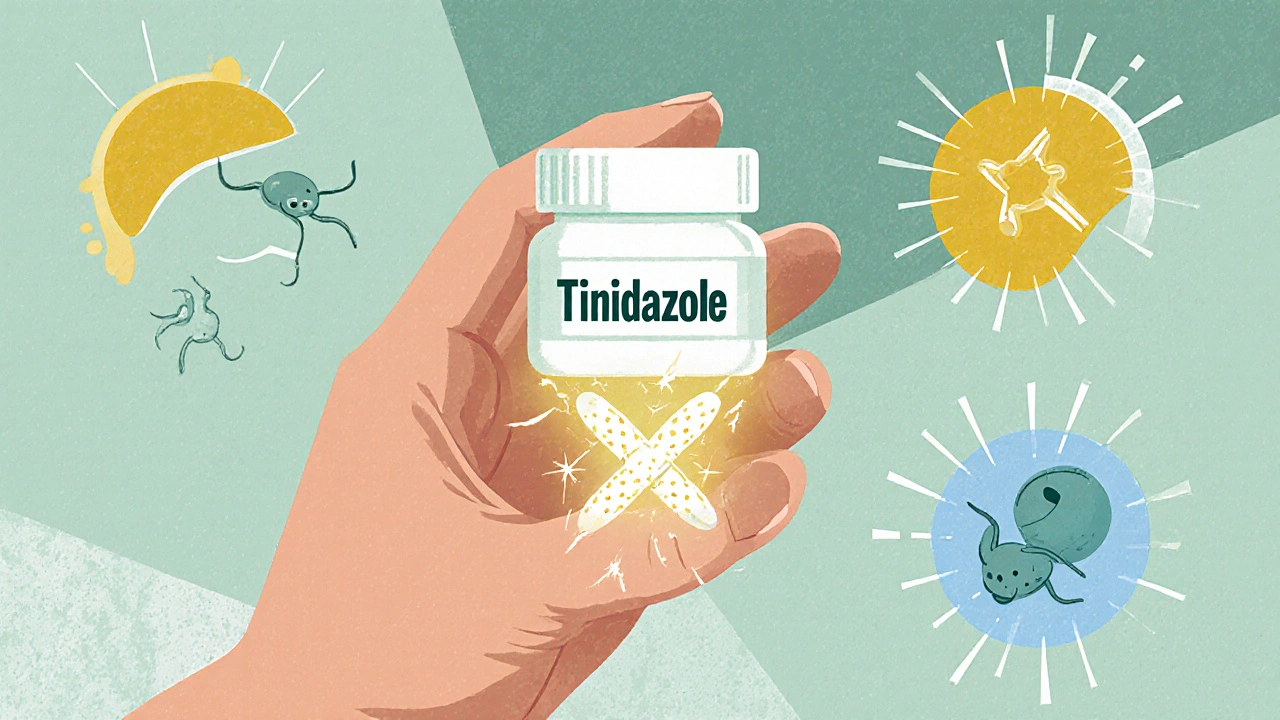Tinidazole: What It Is, How It Works, and What You Need to Know
When you’re dealing with a stubborn infection that won’t respond to regular antibiotics, your doctor might reach for Tinidazole, a potent antimicrobial drug used to treat specific parasitic and bacterial infections. Also known as Tindamax, it’s not your everyday antibiotic—it’s targeted, powerful, and often used when other treatments fail. Unlike broad-spectrum drugs that hit everything, Tinidazole zeroes in on anaerobic bacteria and certain parasites, making it a go-to for infections like trichomoniasis, giardiasis, and amoebic dysentery.
It’s closely related to metronidazole, another antiprotozoal and antibacterial agent commonly prescribed for similar conditions, but Tinidazole lasts longer in your body. That means you often take it in fewer doses—sometimes just one or two pills instead of a week-long course. For people who struggle with sticking to complex schedules, that’s a real win. But don’t assume it’s safer just because it’s fewer pills. Like all strong antibiotics, it can cause nausea, a metallic taste, dizziness, or even serious reactions if mixed with alcohol. You need to avoid drinking while taking it—and for at least three days after your last dose. The interaction isn’t just uncomfortable; it can trigger vomiting, rapid heartbeat, and dangerous drops in blood pressure.
Tinidazole doesn’t work on every infection. It won’t touch strep throat, urinary tract infections caused by common E. coli, or viral colds. Its power lies in specific bugs that live without oxygen—like the ones causing vaginal infections, gut parasites, or even certain types of dental abscesses. That’s why it’s often prescribed after tests confirm the exact cause. If you’ve had a recurring infection that kept coming back after standard antibiotics, Tinidazole might be the missing piece.
It’s also used off-label in some cases, like treating H. pylori when combined with other meds, or in combination therapy for bacterial vaginosis. But it’s not a DIY solution. Self-medicating with leftover antibiotics can lead to resistance—or worse, mask a more serious condition. Always get tested first.
What you’ll find in the posts below is a practical look at how Tinidazole fits into real-world treatment. You’ll see how it compares to other drugs, what side effects patients actually report, how to avoid dangerous interactions, and what to do if your infection doesn’t clear up. There’s no fluff—just clear, no-nonsense info from people who’ve been there, and experts who’ve seen the data. Whether you’re taking it now, considering it, or just trying to understand why your doctor chose it, this collection gives you the facts you need to stay safe and informed.

Tinidazole vs. Alternatives: What Works Best for Parasitic and Bacterial Infections
Compare Tinidazole with metronidazole, secnidazole, and other alternatives for treating parasitic and bacterial infections. Learn which drug works best based on cost, side effects, and convenience.
